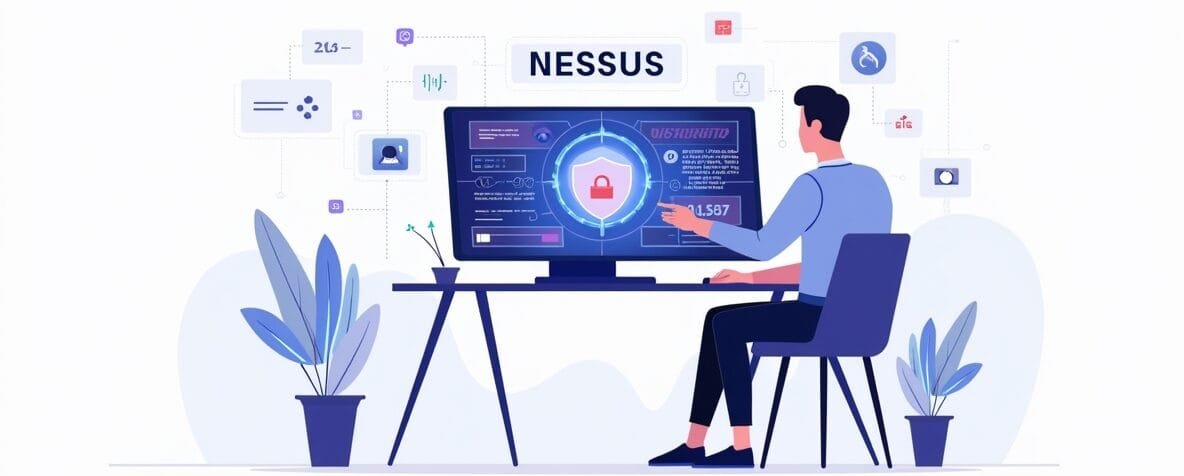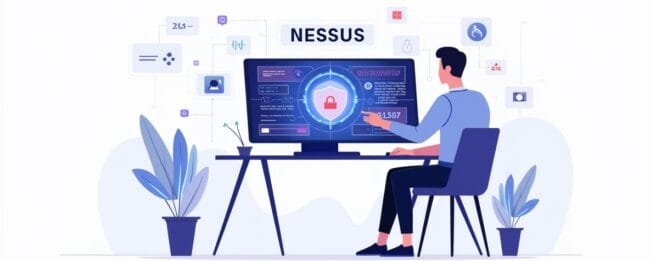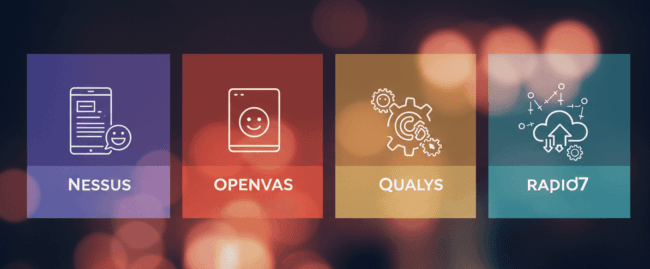
Nessus Vulnerability Assessment Explained: The Definitive 2024 Guide to Mastering Cybersecurity Scanning Forever

Nessus-Vulnerability-Assessment
Introduction: The Cybersecurity Wake-Up Call We All Needed
Imagine waking up to find your business systems hijacked, personal data leaked, or your website mysteriously offline. In today’s hyper-connected digital world, cybersecurity threats aren’t just the stuff of Hollywood thrillers—they’re real, relentless, and rising fast. Whether you’re a curious beginner, an IT professional, a student, or just someone who shops online, understanding how to defend your digital front lines is no longer optional.
Enter Nessus Vulnerability Assessment—one of the most powerful tools in the cybersecurity toolbox. In this guide, we’ll break down everything you need to know about Nessus: what it is, how it works, why it’s trusted by millions, and how you can start using it today to protect your networks, systems, and sanity.
Let’s dive in and decode Nessus like never before.
What Is Nessus Vulnerability Assessment?
Nessus is a top-tier vulnerability scanning tool developed by Tenable, designed to identify weaknesses, misconfigurations, and vulnerabilities in your IT environment. Think of it like a cybersecurity watchdog that sniffs out digital dangers before attackers can exploit them.
Key Uses of Nessus:
- Scanning networks, servers, firewalls, and endpoints
- Detecting outdated software, open ports, and security loopholes
- Providing actionable reports for patching and remediation
- Supporting compliance audits (e.g., HIPAA, PCI-DSS, ISO)
Whether you’re managing a Fortune 500 infrastructure or just want to secure your home lab, Nessus has a place in your toolkit.
Why Nessus Matters in 2024 and Beyond
The digital threat landscape has evolved drastically. With AI-powered attacks, sophisticated ransomware, and zero-day exploits on the rise, a passive defense strategy just won’t cut it.
Here’s why Nessus Vulnerability Assessment is more relevant than ever:
- Over 75,000 vulnerabilities covered and counting
- Constant updates with the latest threat intel
- Trusted by over 30,000 organizations worldwide
- Supports cloud, on-premises, and hybrid environments
Cybersecurity Tip: Regular vulnerability assessments are like health checkups for your systems—they might just save your digital life.
How Nessus Works: A Step-by-Step Breakdown
- Asset Discovery – Nessus scans your network to find all connected devices.
- Vulnerability Detection – It identifies outdated software, misconfigurations, weak passwords, and known CVEs.
- Risk Assessment – Each vulnerability is scored (using CVSS) based on severity.
- Reporting – You get clear, actionable reports to prioritize remediation.
Types of Nessus Scans:
- Basic Network Scan
- Credentialed Scans (for deeper insight)
- Policy Compliance Scans
- Web Application Scans
No coding knowledge? No worries. Nessus has a clean UI and intuitive workflows—perfect for beginners and experts alike.
Key Features That Set Nessus Apart
Let’s talk features—because Nessus isn’t just another scanner. It’s an all-in-one vulnerability assessment solution.
Nessus Highlights:
- Pre-built Templates: Quick scans for everything from malware to misconfigurations
- Custom Policies: Tailor scans to your environment
- Credentialed Scans: Access internal system info for deeper analysis
- Plugin Architecture: Constantly updated by Tenable’s threat research team
- Detailed Reporting: Graphs, CSVs, and compliance checklists
Did you know? Nessus can even integrate with SIEM tools like Splunk and QRadar for seamless threat correlation.
Nessus vs Other Vulnerability Scanners
Wondering how Nessus stacks up? Let’s compare:

Nessus vs Other Vulnerability Scanners
| Feature | Nessus | OpenVAS | Qualys | Rapid7 |
| Ease of Use | ✅✅✅ | ❌ | ✅✅ | ✅✅ |
| Cost (Free Version) | ✅ | ✅ | ❌ | ❌ |
| Cloud Support | ✅✅✅ | Limited | ✅✅✅ | ✅✅ |
| Updates & Plugins | ✅✅✅ | ✅ | ✅✅✅ | ✅✅ |
Verdict: Nessus hits the sweet spot for affordability, functionality, and ease of use—especially for small to mid-sized businesses and IT teams.
How to Use Nessus: Real-World Application & Setup Tips
Getting started with Nessus is simpler than you think.

How to Use Nessus
Step-by-Step Setup:
- Download Nessus from Tenable’s website (Free version available!)
- Install on your preferred OS (Windows, Linux, macOS)
- Activate your license key (trial or paid)
- Launch the dashboard and create your first scan
- Set IP ranges and scan policies
- Review reports and prioritize actions
Pro Tip: Schedule recurring scans to stay on top of emerging vulnerabilities.
Pros and Cons of Using Nessus
Pros:
- Comprehensive vulnerability coverage
- Easy to deploy and use
- Active plugin updates
- Scalable from home use to enterprise
- Strong community and documentation
Cons:
- Some advanced features locked behind paid tiers
- Can trigger alerts on sensitive systems (test before scanning!)
- Reporting can be overwhelming for absolute beginners
Best Practices for Running Nessus Scans
To get the most out of your Nessus Vulnerability Assessment:
- Scan regularly—monthly or even weekly for critical systems
- Use credentialed scans for deeper insights
- Keep plugins updated to detect the latest threats
- Review reports with IT/security teams to align actions
- Test in staging before scanning production
Who Should Use Nessus?
The short answer? Almost everyone serious about cybersecurity.
Ideal Users Include:
- Cybersecurity Students & Researchers
- Small to Mid-Sized Businesses
- IT Admins & System Engineers
- Penetration Testers
- Government & Law Enforcement Agencies
- Freelance Ethical Hackers & Consultants
FAQs About Nessus Vulnerability Assessment
1. Is Nessus free to use?
Yes! Nessus Essentials (formerly Nessus Home) is free for personal, non-commercial use and supports up to 16 IPs.
2. Can Nessus detect zero-day vulnerabilities?
While Nessus primarily detects known vulnerabilities, Tenable’s plugins and research help identify emerging threats quickly.
3. How often should I run a vulnerability scan?
Ideally, once a week for critical systems and monthly for others. Also, scan after major updates or changes.
4. Is Nessus safe to use in production environments?
Yes, but always start with a test scan—some configurations may disrupt sensitive systems.
5. Does Nessus support cloud environments?
Absolutely. Nessus can scan AWS, Azure, and GCP environments, depending on your configuration.
Final Thoughts: Mastering Cybersecurity Scanning with Confidence
Cybersecurity doesn’t have to be intimidating. Tools like Nessus Vulnerability Assessment empower individuals, businesses, and institutions to take charge of their digital defenses—no PhD required.
By understanding how Nessus works, setting up regular scans, and interpreting results, you’ll build a proactive, resilient security posture. Whether you’re protecting your side project, your company, or your country—Nessus has your back.
Over to You!
Have you used Nessus before? Thinking of trying it out? Share your thoughts in the comments below!
Don’t forget to subscribe, share this post, and check out related guides to stay ahead in the cybersecurity game.
Written by an expert tech writer who’s been down the rabbit hole of cybersecurity, coffee-fueled all-nighters, and “why did I open that port?” regrets—so you don’t have to.